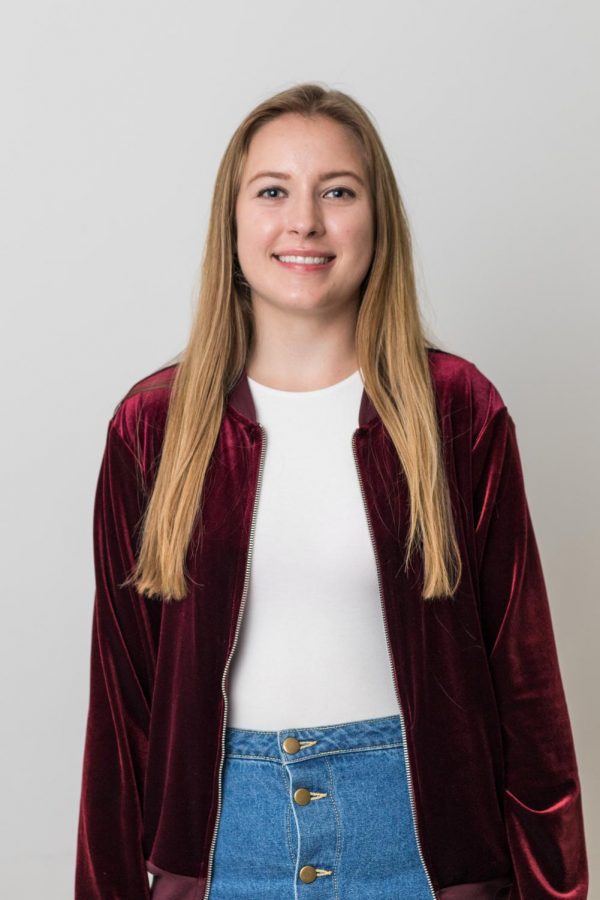Fitting in when you can’t fit in
September 5, 2017
While wandering around the underwear store Intimissimi in Italy this summer, I overheard a customer asking an employee about a specific bra size. The employee shook her head “no” and said that size isn’t carried at the store. After working at Victoria’s Secret for three years, I know this is not an uncommon situation.
The average American woman is a size 16; however, clothing often maxes out at a size 14 or Large. A July 13 article from The Economist noted that 68 percent of women are considered plus size, but in 2016, only 18 percent of women’s clothing sold was plus-sized.
Designers are failing to recognize their career’s mission: to create clothes for all women.
Plus-size women have very limited options, and these options provided are hidden in the store or even on the website. This makes shopping for plus-size clothing difficult and sometimes more stressful for women.
Fashion design show “Project Runway” premiered its 16th season Aug. 17 and finally incorporated size-inclusive models into the design challenges.
Designers are typically not thrilled to dress various body sizes for the challenges, said Heidi Klum, a judge on “Project Runway,” in an Aug. 17 interview with “Entertainment Tonight.”
“This is the real world; not everyone is a runway figure,” Klum said in the interview. “You have to dress real people and real people come in different sizes.”
In the premiere, designer ChaCha called his dress form “too fat,” but the other contestants were quick to call out the designer.
This is not the first time designers have neglected to expand their range of sizes. In British Vogue’s January issue, Alexandra Shulman’s Editor’s Letter outlined the difficulty in finding a designer who would lend clothing to photograph the magazine’s cover model Ashley Graham, a plus-size supermodel. Luckily, American brand Coach stepped forward and dressed her.
“It seems strange to me,” Shulman wrote. “While the rest of the world is desperate for fashion to embrace broader definitions of physical beauty, some of our most famous fashion brands appear to be traveling in the opposite and … unwise direction.”
Although there are brands that do carry clothing for all sizes, these brands differentiate between plus sizes and “women’s” sizes. Forever 21 considers its sizes 0–12 “women’s,” but sizes 12 and over are called “plus.” Size should not define your gender or your femininity. Just because a woman is a size 18 doesn’t mean she is any less of a woman.
Along with the slight digs at plus-size women’s femininity, there is a noticeable price difference in store clothing between the sizes.
On Forever 21’s website, a pair of contemporary striped pants in the women’s section costs $19.90 for sizes S–XL. However, the same pair of pants costs $22.90 in plus sizes.
Forever 21 is not the only store with a price difference. On July 25, body-positive campaign Free To Be OK accused U.K. fashion brand Boohoo of charging more for a plus-size dress. Boohoo has not responded to the accusations against the brand.
Designer and “Project Runway” Season 4 winner Christian Siriano featured models of various body types in his spring 2017 fashion show. When asked in a Sept. 11, 2016, interview with Elle Magazine why more designers don’t create garments for more body types, Siriano said the “trick” is to have time and want to make these garments. When putting a garment on a body, the designer has to play with every piece to match their vision. When designers expand their range of sizes, it takes more time to create, according to Siriano.
But with designers and brands making millions of dollars every year, time or money should not be an excuse for little to no options in quality, fashionable clothing for plus-size women. Clothing should be available for everyone and the cost shouldn’t be higher because of size. It shouldn’t matter how much time or money it takes; all that matters is making a woman feel confident in a garment. As “Project Runway” judge Tim Gunn would say, “Designers, make it work.”








